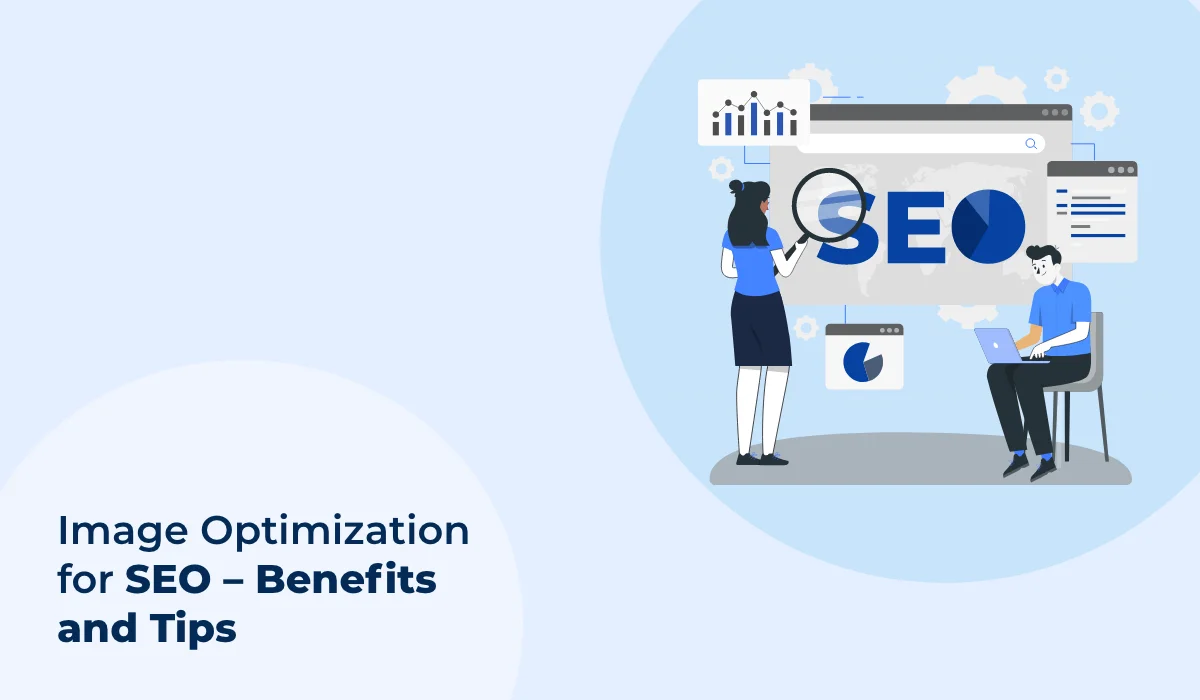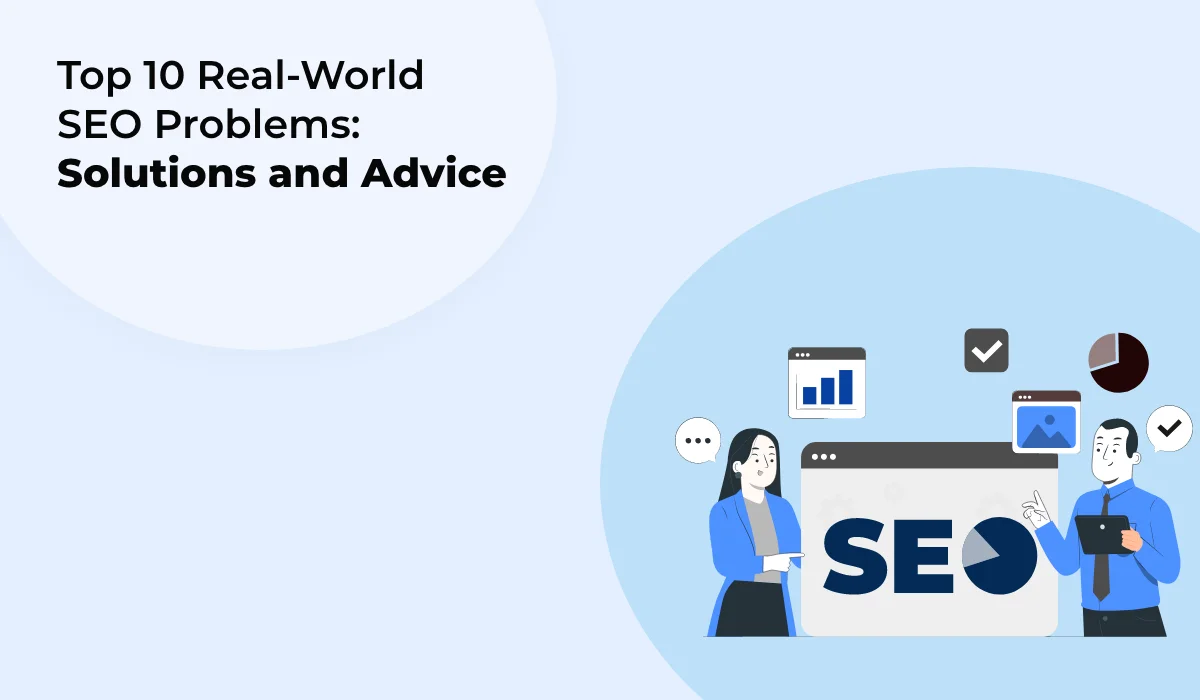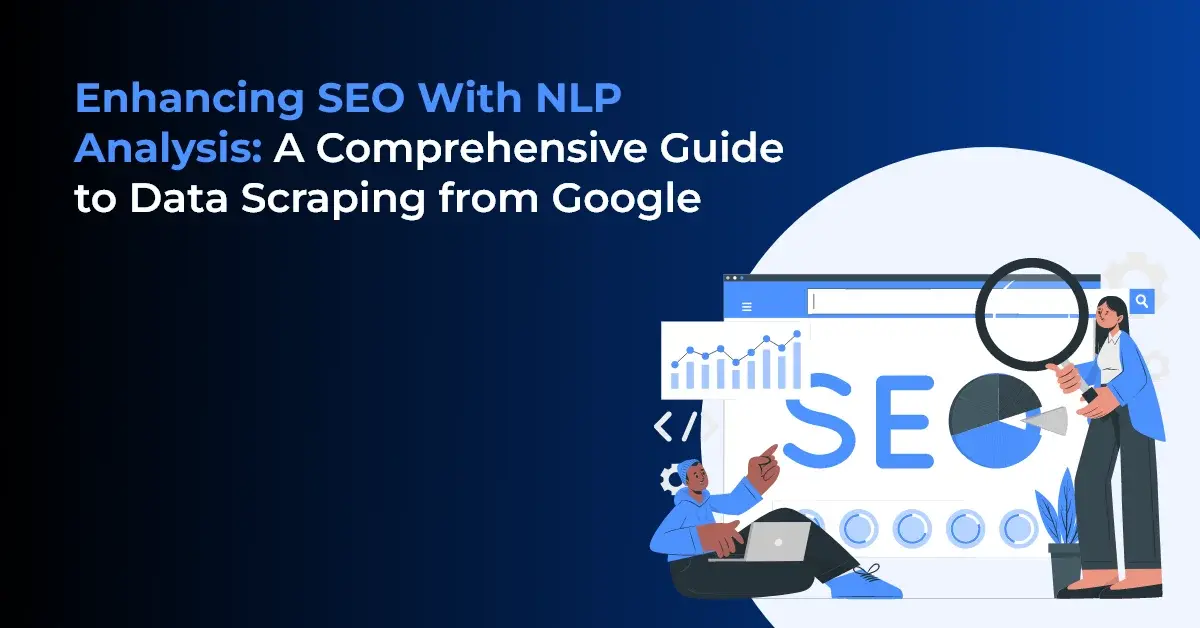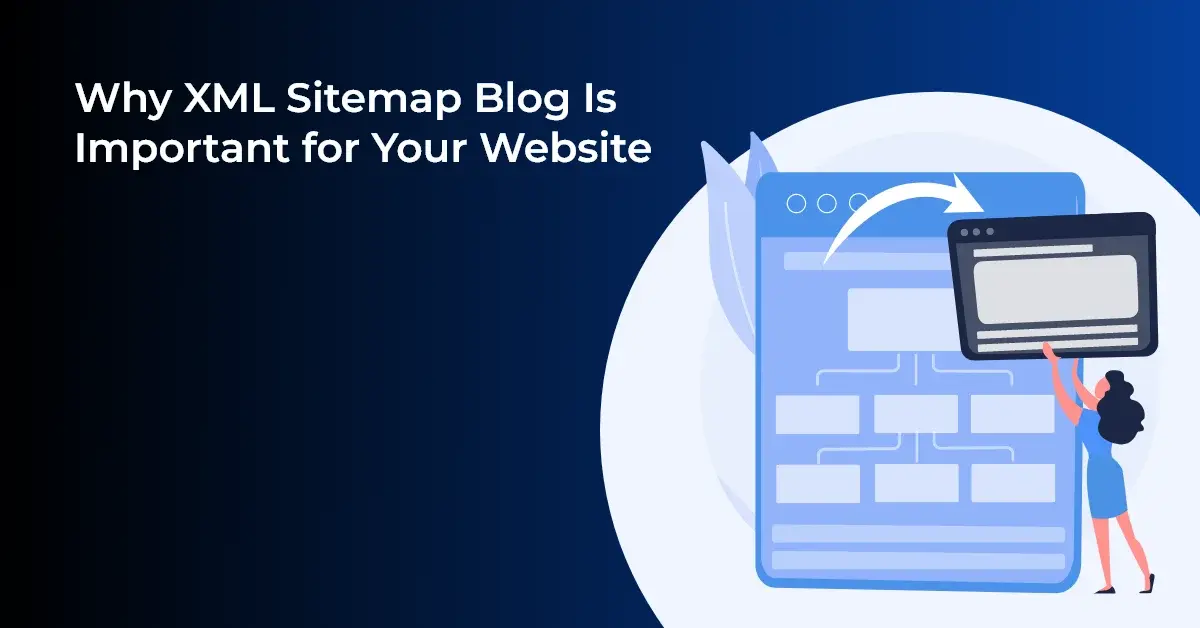How to Optimize Images for SEO: Benefits and Tips to Boost Rankings

Published on: November 25, 2021
Updated on: February 06, 2025
5354 Views
- SEO (Search Engine Optimization)
9 min read
We live in the age of visual information, where over 65% of the population are visual seekers and learners.
In this fast-paced world, the attention span of the audience has majorly reduced. Thus, to attract relevant audience and traffic to your website, you need to be more proactive. Your websites must deliver a fast, effortless, and satisfactory experience to your visitors.
As a result, today, marketers are focusing more on SEO image optimization.
How Does Image Optimization Help with Website and SEO?
- Improves page loading speed for better website ranking.
- Shoves off additional page loading time to reduce bounce rate.
- Increases user engagement and improves keyword prominence.
- Provides a seamless user experience with quality images.
- Delivers contextual information to search engines like Google.
SEO Image optimization can give you a competitive edge for your search engine optimization efforts. Image optimization lets the search engines see the potency of a website, and at the same time, can improve visitor’s experience.
Most discussions about SEO for images are only limited to alt tags, but there is more to it. Image SEO means optimizing the websites' graphics to make the webpage more alluring and engaging to the search engine crawlers and the visitors.
Visual search is a boon. Understanding the significance of Google optimized images will augment website rankings, increase retention, and reduce bounce rate.
Poor SEO image, constantly drains your websites' ability to rank, gain links, drive traffic, or even improve the index.
Why Optimize Images for SEO?
Correct image placement helps the user to understand and engage with your content. A 1000 word content can be overwhelming but projected with images, it will represent a conspicuous picture.
Talking about SEO, in the near future, Google will be more inclined towards visual search. Moreover, if you are familiar with the updated Google algorithms, you might have observed that visual content has been on the rise for a while now.
For almost every simple search term, images are the first result you get.
The first rule of image optimization is – selecting the right image.
Well, everyone is bored with the same kind of image on every website. By using customized images, you get one step closer to engaging with your audience. Remember, you cannot miss out on the significance of image and image search.
When it comes to search engines, these images provide contextual information. SEO image optimization tips can help you understand the need for it.
Image optimization is conducted to present a high-quality image into a compatible format, resolution, and size that will not hamper the loading speed of the website. Whenever a high definition and non-optimized image is added to websites, the page takes additional time to load, which directly affects your website performance on SERP.
The image optimization process includes labeling or naming images accurately so that it becomes easy for search engines crawlers to read and understand the webpage context.
Moreover, images are a considerable part of a web page's weight. This is because images consume more bytes as compared to text and other parts, which is why their complexity and size profoundly sway a website’s performance. Thus, making image optimization a crucial part of the SEO puzzle.
Experts say a 1% delay in website speed can result in 7% reduction conversions.
SEO image optimization results in enhanced user experience, which positively impacts your search engine rankings. As a result, you can observe improved customer retention, engagement, and conversions.
10 Must-Follow SEO Image Optimization Tips
1. Resize the Images
"Don’t mix image size with file size"
Image size refers to image dimensions (pixels) whereas file size refers to total space needed to store the image on the server (bytes).
Having images on a website with large dimensions and high resolution can slow down your page loading speed, which is why you need to scale them in a way that does not affect the quality of the image. No one likes blurry or pixelated images, so image quality would be a top priority.
2. Select Correct Compression Rate
Compression rate might sound tricky, but with the right SEO image optimization tools, it can be done easily.
Remember, compressing images excessively will not only make the file size smaller but will also degrade image quality. Furthermore, using a low compression rate will profusely increase the file size.
There is no ‘one size fits all’ solution. You should try and test various compression sizes that will not harm the image quality and file size. Also, you can test for optimization speed for the particular size selected.
3. Customize File Name
A relevant file name will increase the chances of ranking on SERPs and is crucial for SEO. Thus, prior to adding an image to the website, choose a relevant name (don’t forget to add keywords) to rank in image search results.
For example, if you are uploading a beverage, you can add the name Mojito or Ice Tea. Remember, the file name is strictly for search engines, visitors will never see the file name. It gives the search engine a bit more information regarding the webpage and the keywords associated.
Pro Tip: Avoid using special characters like underscores, as search engine crawlers don't recognize it. In order to separate keywords, add hyphens.
4. Consider Alt Tags
Alt tags is undoubtedly one of the most talked about SEO image optimization tips. These tags are only visible to search engines, not users.
Every image can have its own alt tag. Sometimes, when there is a weak connection, or the website is having a glitch, the search engine reads alt tags to provide you with relevant information.
Without an alt tag, it is not possible for search engine crawlers to index the image content. Moreover, a keyword targeted alt tag will provide good context to search engines and improve visibility.
5. Add Image Captions
Adding relevant captions under your image will help search engine crawlers to determine the subject matter of the image. Image captions work as a pathway to ensure the image is described correctly.In addition, with image captions, you have the leverage to add a target keyword on the webpage.
Pro Tip: Remember, not to do keyword stuffing. Add image captions in a natural way. Moreover, there is no fixed rule for adding a caption, so you can create them as you want.
6. Choose the Correct File Type
For raster images, you have three choices: GIF, PNG, and JPG (JPEG).
JPG or JPEG is one of the most common file formats, as it uses small file sizes and is supported by maximum websites and search engines. For image file quality, JPG is not feasible, as it does not support transparent backgrounds.
PNG provides a high-resolution image and supports a text description, serving best for SEO. However, PNG comes with a major downside that is it requires larger file sizes than other formats. So, this is mostly used for logos and complex images with text or description.
GIF is rarely used in web pages unless necessary. GIF does not support various color ranges as compared to PNG and JPG. However, it is a good choice for simple images because of transparent backgrounds and small file sizes features.
7. Use Sitemap
Sitemap helps Google to crawl the pages more accurately, increasing the chances of your image displaying on search results.The sitemap is an integral part of SEO strategy. To get noticed by search engines for video, GIF, infographics, photos, or any other visual format, you need to include them in your sitemap.
Add page URL, page description, title, URL, and licence information of your visual content.
8. Add Responsive Images
Just like responsive websites, responsive images will significantly increase the traffic to your website. Going responsive is one of the best ways to ensure the website looks and performs well on all devices like desktops, laptops, mobile phones, tablets, etc.
Also, it ensures that all users are able to view the same information.
9. Ensure Structured Data
With structured data, search engines will display the images as rich results. It is used to provide relevant information on the web, where the search engines use it for rich snippets or metadata to improve user experience.
10. Implement Lazy Loading
Images are assets to attract customers. However, overlooking image optimization for SEO results in slower website speed. Though some high-quality images, especially with low compression makes your website speed really slow, so to avoid it, try implementing lazy loading.
Lazy loading means the images are not loaded until absolutely necessary. Moreover, Google’s PageSpeed Insights recommends using this tactic to speed up your website.
What Is the Impact of Image Optimization?
Image optimization, a crucial part of SEO, helps to improve website ranking and user engagement. With the rise of visual search, it has become important to use customized images that provide contextual information to search engines like Google.
To optimize images for SEO, it is important to select the right image, resize and compress the images, customize file names and consider alt tags. Image editing free online tool can help with image optimization by providing options to resize, crop, and compress images without affecting the quality. It leads to enhanced user experience, improved customer retention, engagement, and conversions.
The power of SEO Image is insane, and the following stats prove this statement.
- Over 1/3 of keywords contain Google images.
- Google images search accounts for 22.6% of all internet searches.
- Each month there are over 600 million searches on Pinterest.
- Tweets containing images are 34% more likely to receive retweets than those without.
Wrapping Up
SEO image optimization is not only essential for satisfactory user experience, but it also helps in improving website ranking, boosting visibility, increasing web page loading speed, and enhancing the overall appearance of the website reducing bounce rate. By using the above-mentioned image-optimization techniques, you can improve the likability of your website and its content, both for users and search engines.
Need help with image SEO Optimization? Do not fret, we are here to help. Let us work together and work on an optimal solution for your problem!
Frequently Asked Questions
To optimize a product image for SEO, ensure it has a descriptive filename, relevant alt text, proper dimensions, and is compressed for faster loading times.
Image optimization involves adjusting factors such as file size, format, and metadata to improve the image’s performance and visibility on search engines.
Image optimization is crucial for on-page SEO because it improves webpage load times, enhances user experience, and helps search engines understand the image’s content, ultimately boosting organic visibility and driving traffic to the website.
To optimize an image in HTML, use the “img” tag and specify attributes such as “src” for the image URL, “alt” for alternative text, and “title” for additional information. Additionally, consider using CSS or JavaScript techniques for further optimization, such as lazy loading or responsive images.



